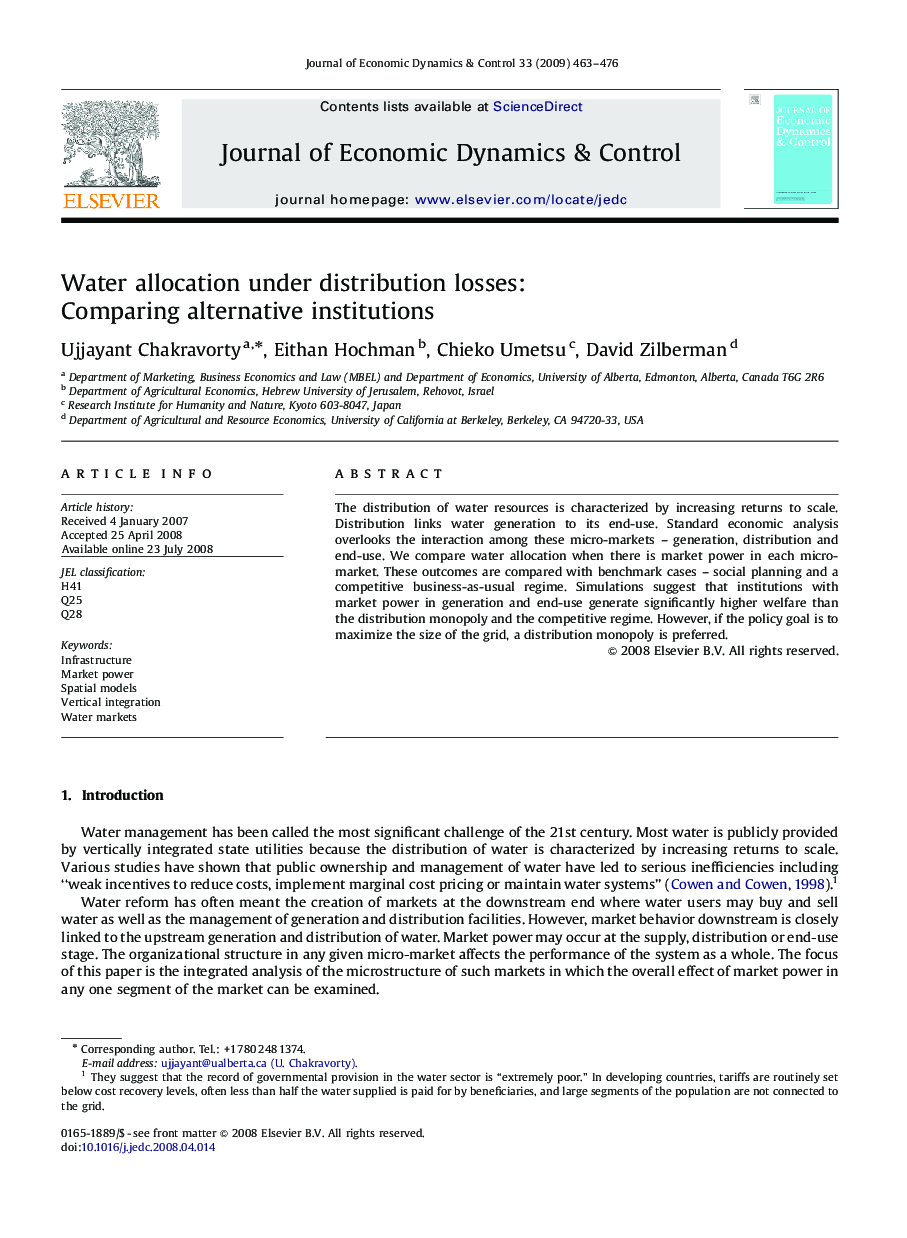| Article ID | Journal | Published Year | Pages | File Type |
|---|---|---|---|---|
| 5099115 | Journal of Economic Dynamics and Control | 2009 | 14 Pages |
Abstract
The distribution of water resources is characterized by increasing returns to scale. Distribution links water generation to its end-use. Standard economic analysis overlooks the interaction among these micro-markets - generation, distribution and end-use. We compare water allocation when there is market power in each micro-market. These outcomes are compared with benchmark cases - social planning and a competitive business-as-usual regime. Simulations suggest that institutions with market power in generation and end-use generate significantly higher welfare than the distribution monopoly and the competitive regime. However, if the policy goal is to maximize the size of the grid, a distribution monopoly is preferred.
Related Topics
Physical Sciences and Engineering
Mathematics
Control and Optimization
Authors
Ujjayant Chakravorty, Eithan Hochman, Chieko Umetsu, David Zilberman,
